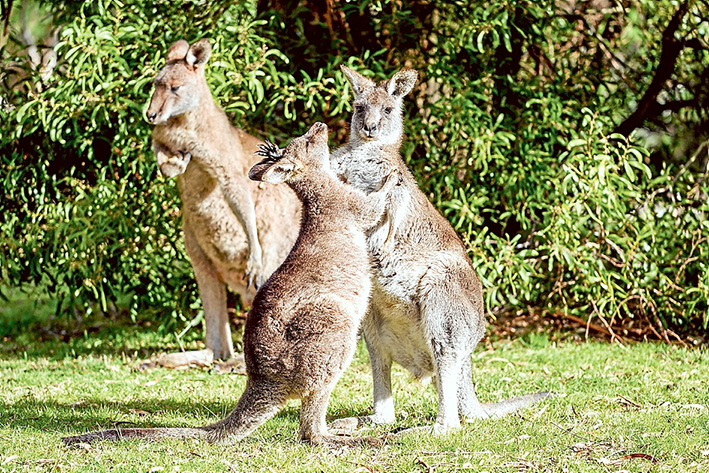
AN appeal will be launched early in the New Year to buy land to form safe wildlife corridors between national parks on the Mornington Peninsula.
The Australian Wildlife Protection Council (AWPC) is concerned for the survival of native animals forced from their natural habitat on private property.
On Friday the AWPC announced the appointment of Craig Thompson as its new wildlife protection officer and a plan to crowd fund corridors to protect displaced animals.
Mr Thompson said on Monday that he had attended 80 callouts this year to collisions between eastern kangaroos and motor vehicles.
Female kangaroos were sometimes found to be carrying joeys which, if the mother had been killed, were taken to wildlife carers.
Mr Thompson said instead of culling kangaroos farmers could include them in their land management practices.
“It is ironic that some farmers are paying a lot of money for services that kangaroos would provide for free,” he said.
“For instance, vineyards spend much time and money keeping grass and weeds down between the vines. But, if they took down the fences and let the kangaroos in, the roos would not eat the vines, but they would keep the grass short.”
Mr Thomson said the campaign to buy land on the peninsula was aimed at creating “a private land reserve system for a wildlife corridor between national parks to sustain wildlife in the future”.
He says the need is urgent as suburban development and a recent spate of farm-fencing are blocking the kangaroos’ natural behaviour on the peninsula.
Mr Thomson said wildlife corridors were needed “in the area between Flinders, Boneo and back towards Mt Martha”.
Ideally, the corridors would provide animals with access to the nature reserve around the former Devilbend Reservoir, near Moorooduc.
“Currently with land clearing for development, councils require offsets. But offsets very rarely consider what happens to displaced wildlife, except for managing it, which is a euphemism for conducting cull or fertility programs,” Mr Thompson said.
AWPC president Maryland Wilson said she was shocked to hear of a recent call to cull kangaroos ahead of development as the only option for kangaroos displaced by Melbourne’s expansion.
“There is another non-violent solution,” she said.
“It is a scandal that we have suffered through a succession of planning documents for Melbourne, without any allocating land for habitat with interconnecting continuous wildlife corridors that would enable safe passage for native animals. They have also failed to provide more than a tiny handful of animal bridges and underpasses at significant points on roads where wildlife often cross.
“Kangaroos, koalas, and other wildlife are increasingly road accident victims. As Melbourne expands to accommodate its human population growth program, suburban development pushes them out onto roads. This is planning negligence. “
Ms Wilson said the AWPC says has repeatedly engaged with councils in devising detailed plans for wildlife corridors but no state government has cooperated with these plans “despite obligations to protect wildlife under the Fauna and Flora Guarantee Act”.
Ms Wilson said the AWPC will be seeking a meeting with the state government “to negotiate for wildlife corridors instead of culling”.
First published in the Western Port News – 8 December 2015



